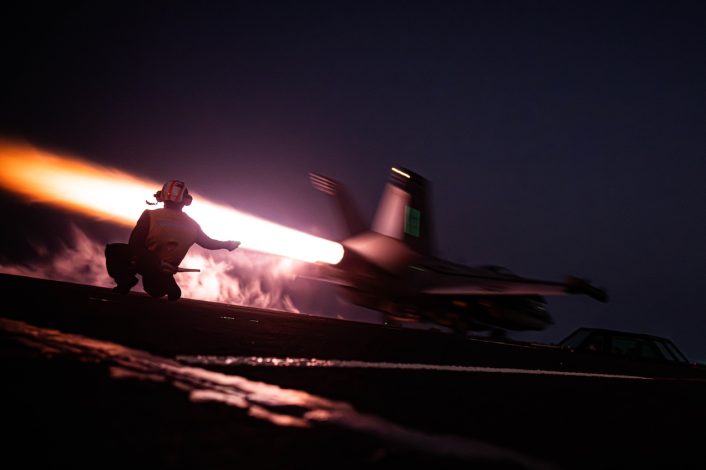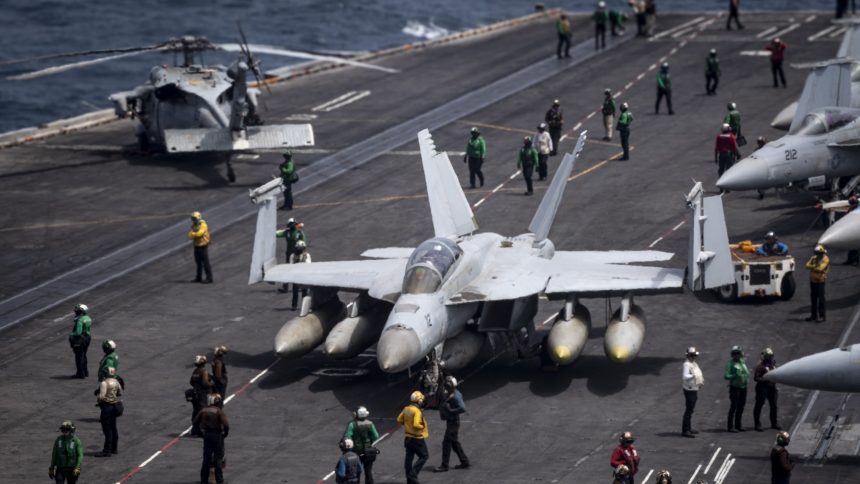The U.S. Pacific Fleet has confirmed the safe rescue of all personnel after an MH-60R Sea Hawk and an F/A-18F Super Hornet from USS Nimitz both crashed into the South China Sea just 30 minutes apart.
Five personnel, three on board an MH-60R Sea Hawk, and two in the F/A-18F Super Hornet, were recovered safely by the carrier group’s search and rescue assets, with official statements saying they are in a stable condition.
At this early stage, only limited details are available regarding these two incidents. The MH-60R Sea Hawk, operated by Helicopter Maritime Strike Squadron 73 (HSM-73), went down into the South China Sea first at approximately 2:45pm local time. At the time of the incident the helicopter was engaged in routine operations from the USS Nimitz (CVN 68) aircraft carrier, which currently leads Carrier Strike Group 11 (CSG 11).
Around 3:15pm local time, just half an hour later, the F/A-18F Super Hornet from Strike Fighter Squadron 22 (VFA-22) crashed into the sea after both pilots ejected from the aircraft. The circumstances that led to the crew’s decision to eject have not been confirmed.
The Nimitz, the oldest aircraft carrier in the U.S. Navy’s fleet, is approaching the tail end of what is expected to be its final operational deployment. Departing the United States in March 2025 for a routine deployment to the Indo-Pacific, the Nimitz has spent some time within the Fifth Fleet area of responsibility, making a port call in Bahrain in August. The carrier has since departed back towards the Pacific, heading through waters contested by the People’s Republic of China.

Though the survival of all crew members is welcome news for all involved, the loss of these two aircraft in close succession is a troubling story for U.S. naval aviation after a difficult time that has seen several high profile incidents. Investigations into the causes of both crashes will be launched immediately.
The official announcement was made through the U.S. Pacific Fleet’s social media channels, which are currently receiving limited updates due to the U.S. government shutdown.









